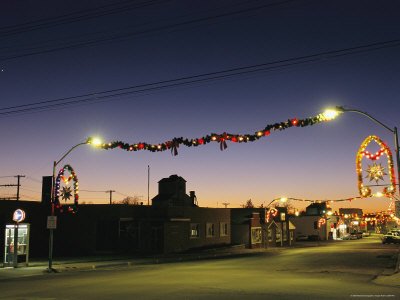by Michael Hofferber. Copyright © 1996. All rights reserved.
Out here we pretty much ignore the TV weather forecasts. They aren't accurate more than half the time, so we'd do as well flipping a coin.
It's not that meteorologists in these parts are poorly trained or that our weather is particularly tricky. They're just demographically handicapped. They forecast weather for their primary viewing audience, the "big city," which is 25 miles away and 600 feet lower.
 Folks like us in outlying rural areas are on our own, which is how we like it most of the time.
Folks like us in outlying rural areas are on our own, which is how we like it most of the time.We don't follow the "news" much, either. It's all about city life, mostly, and one ghastly murder after another. There's not enough minutes on the TV news to tell us about all the shootings and robberies and child abuse going on. There's not enough pages in the newspaper.
No wonder the media never gets around to reporting on how our neighbor's breast cancer miraculously went into remission or how the Kiwanis constructed a band shell for the park. Some small towns have a weekly newspaper that prints news of kids that aren't in trouble and local governments that aren't corrupt, but they don't sell many copies.
Around here, when folks want "up-to-the-minute" news they don't subscribe to CNN, they buy a scanner. For less than the cost of a couple months of cable TV, a person can buy an emergency frequency scanner that tunes into the radio calls of police, firefighters and ambulance crews. The guy who runs the local gas station has one, and so do several neighbors.
If we need to check on winter road conditions we huddle around the scanner down at the Co-op and listen to the snowplow drivers chatter at each other. If there's an accident somewhere, we'll hear about it on the scanner long before it's news.
Some folks, like the neighbors we play cards with, leave their scanners on night and day. Over pinochle on a Friday night we listened as a crime wave swept through our town.
First, the local police stopped a couple cars for speeding -- out-of-staters, of course -- and checked on a barking dog down by the gravel pit. We all knew which dog they were talking about.
Later, there was a call about a suspicious person behind the bar and the Sheriff went to investigate. After a few moments he called for a backup. The "suspicious person" he went looking for was nowhere to be found, but a young kid he questioned outside the bar had gotten mad and was using "loud profanities," the Sheriff said. The 16-year-old boy was arrested.
After that, the night was quiet until the State Police were contacted by a woman who had been traveling northbound on the state highway when a dark-colored van passed her recklessly. As the van passed, a passenger yelled at the woman and made an obscene gesture. A patrolman said he would investigate.
As we folded our last hand, we reflected on how fortunate we were to live where the most serious crimes of that particular night were bad manners.
Rural Delivery
Scanning for News
Artwork: A Twilight View of a Small Town Street Decorated for Christmas


